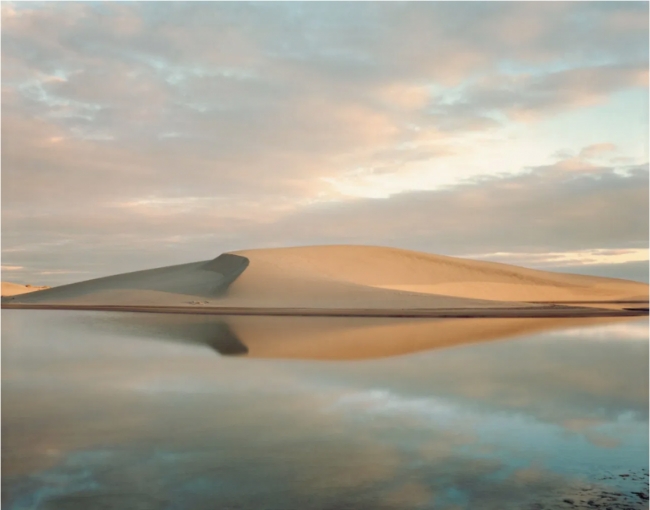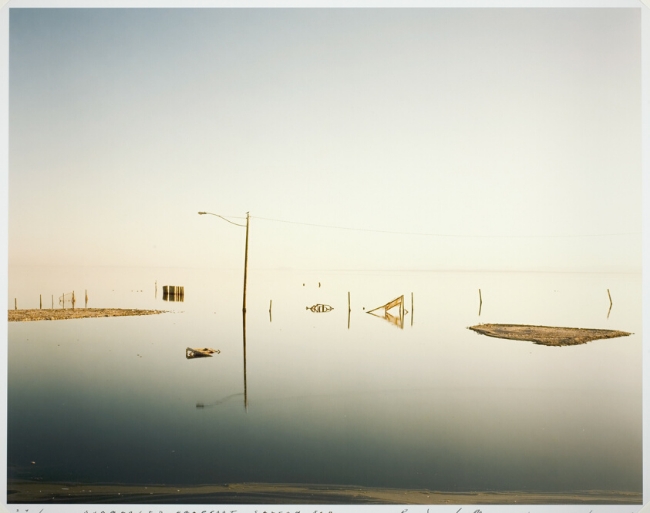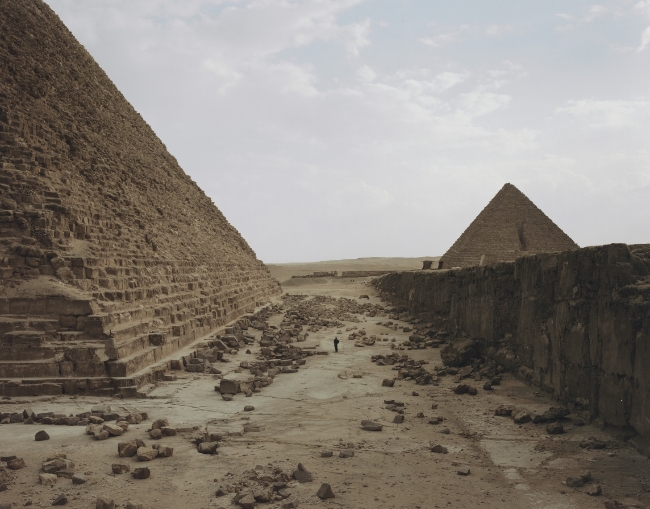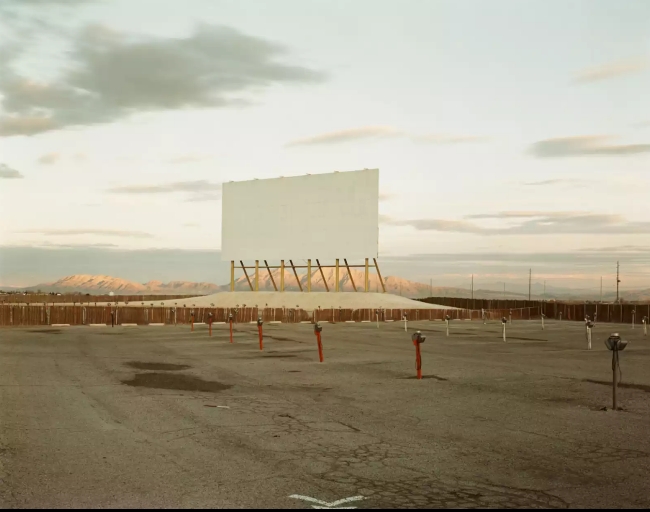It sounds as if Richard Misrach always had a camera in his hand. At the age of twelve his parents put him in charge of photographing the family vacations–but he was just a kid, so he wasn’t serious about it. Then in high school he took a photography course and did well–but he was just a teenager, so he wasn’t really serious about it. In college at Berkley in the late 1960s, Misrach studied math and psychology; he kept a 35mm camera on hand to photograph the student protests and riots–but he was just documenting the protests, so he wasn’t actually serious about photography as photography. But then in 1969, between demonstrations and classes, Misrach went to see an on-campus exhibition of the work of landscape photographer Roger Minick.
“I recognized the beauty and the power of the medium, and felt for the first time that it was something I should be doing with my life.”
And then Misrach got serious. Serious enough to buy a Hasselblad.
As a child of the 60s, it’s not surprising that Misrach’s first major project was to document Berkley’s homeless population. That was perfectly in keeping with his interest in photographing the student demonstrations of the period. Although he never lost his interest in social issues, Misrach felt increasingly drawn to photography as a means of making art. His greatest interest (and the one we’re exploring here) was in the art of the landscape.

During those early family vacations, Misrach had been exposed to the desert. It’s the nature of the desert–any desert–to distill the world to its simplest components: light and a horizon line. Once he became serious about photography, it was not surprising that Misrach would return to the desert. He said this about the desert:
“Once you fall in love with it that’s it. The light, the space, the solitude, the silence. Oh my god. It’s a really powerful place to be. You’re with yourself.”
His fascination with the desert turned into a life-long project, which he calls the Desert Cantos. The project, patterned after the Cantos of Ezra Pound, takes the form of a long, epic visual poem. One stanza of that poem involves Battleground Point, an area in the northern Nevada desert that lies between the Carson and Humboldt Rivers. Every decade or so heavy winter storms cause those rivers to flood, temporarily turning Battleground Point into an eerie union of desert and wetlands. For Misrach, that was an opportunity not to be missed.
But Misrach’s landscape work extends beyond the parameters of traditional landscape photography. Like Edward Burtynsky, Misrach likes to blend social concerns and documentary awareness into the art of the landscape. Critics and curators have referred to his photography as ‘cultural landscapes’. He creates large panoramas depicting the interactions of humanity with the landscape. But where Burtynsky explores the damage done by human interactions with the land, Misrach’s work is more general. He’s not taking aim at the damage–intentional or accidental–done to the planet by humankind; he’s simply examining the footprint we leave behind on the physical world.

There is something in the essential quality of humanity that seems uncomfortable with the notion of emptiness. Writers need to fill the blank page and painters need to fill the blank canvas. Even though we may admire the spare beauty of the desert, the very emptiness and sheer flatness of it seems to induce in us a need to fill it. Unlike writers and painters, however, humankind isn’t always very discriminating about what we fill deserts with. We may install a few artful and awe-inspiring pyramids, but we’re just as likely–more likely, in fact–to fill that empty space with drive-in movie screens or concrete bunkers packed with industrial or nuclear waste.
“The human struggle, the successes and failures, the use and abuse, both noble and foolish, are readily apparent in the desert. Symbols and relationships seem to arise that stand for the human condition itself. It is a simple, if almost incomprehensible equation: the world is as terrible as it is beautiful, but when you look more closely, it is as beautiful as it is terrible.”

One of the things that distinguishes Misrach’s desert images is an indefinable sense that the beauty of the desert will prevail. The artifacts humans build in the world’s deserts–the movies screens, the pyramids, the storage facilities–may clutter up the landscape, but they can’t mar the essential splendor of the desert. At least not for very long. In desert terms, five thousand years isn’t very long.
As his interest in art grew, so did the size of Misrach’s cameras. Eventually he began to use the camera of choice for most landscape photographers: an 8×10 view camera. He worked very simply: one camera, one lens, one type of color negative film. With the larger camera came larger negatives and, of course, larger prints–four feet by five feet. It takes a large print to convey some sense of the magnitude of the desert, some sense of its emptiness, some sense of the landscape’s power and authority.

I have spent my half century on the planet primarily in the eastern half of the United States–the forests of New Hampshire, the coasts of Maine and South Carolina, the tidewaters of southern Virginia, the green fields of Iowa and Ohio. I have visited the deserts of the American Southwest and found them to be alien and astonishing. The desert landscape reminded me every day–and even more so every night–that we exist on a planet twirling in the vast expanse of space.
The desert made me feel small and inconsequential. It was not, for me, a comfortable feeling. And yet I found myself half in love with it all. The quality of light feels both very old and altogether new, as if it’s been hanging around since the beginning of the world just so you could see it for the first time. When I look at the photographs in Richard Misrach’s Desert Cantos I feel them as much in the lower part of my gut as I appreciate them for their beauty.
Ezra Pound, in his Cantos asks:
What thou lov’st well shall not be reft from thee
What thou lov’st well is thy true heritage
Whose world, or mine or theirs
or is it of none?
Richard Misrach, I suspect, would have an answer: It’s mine and yours and his and all of ours.
